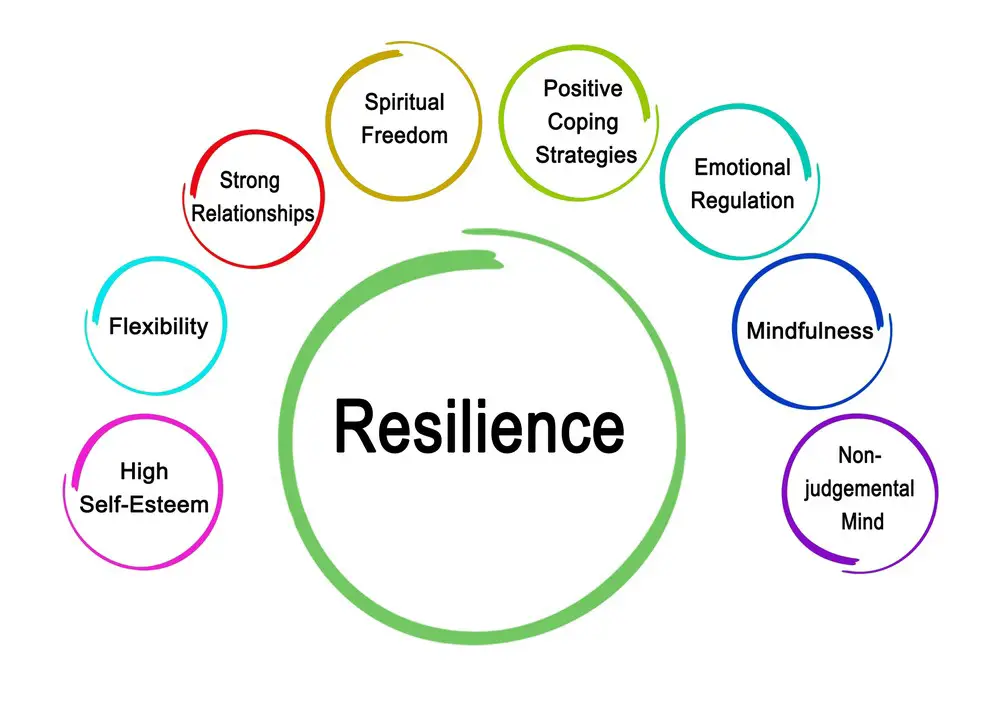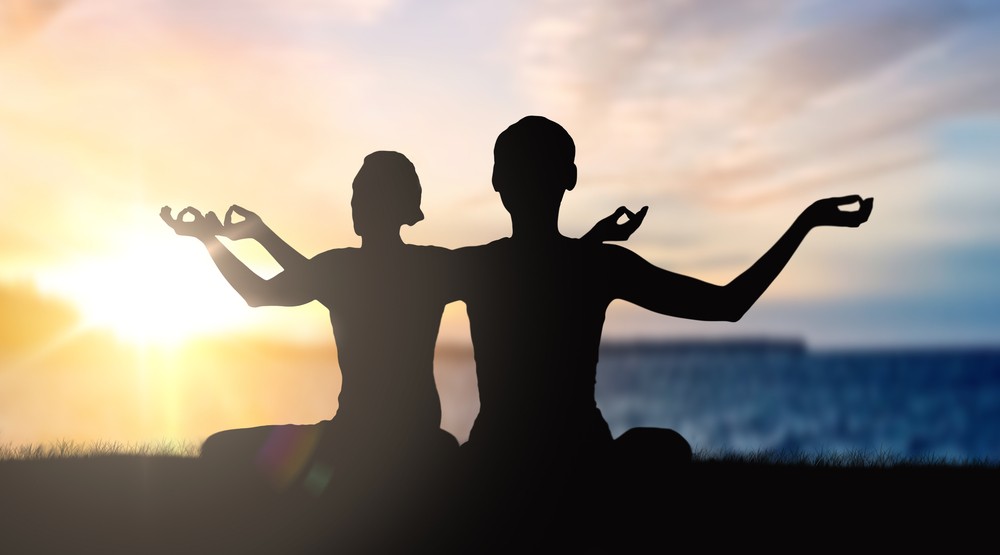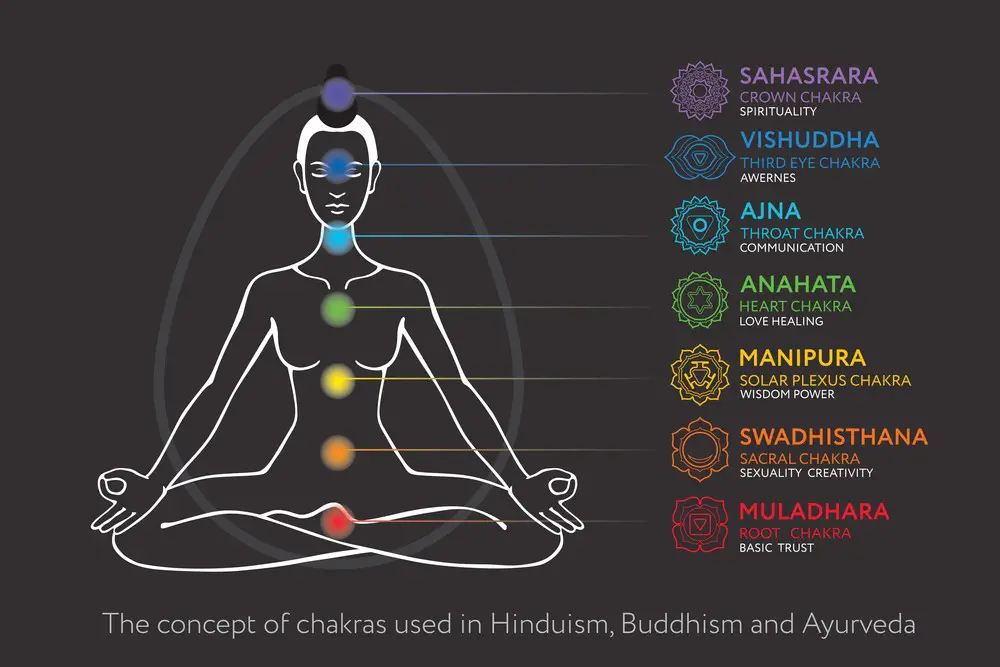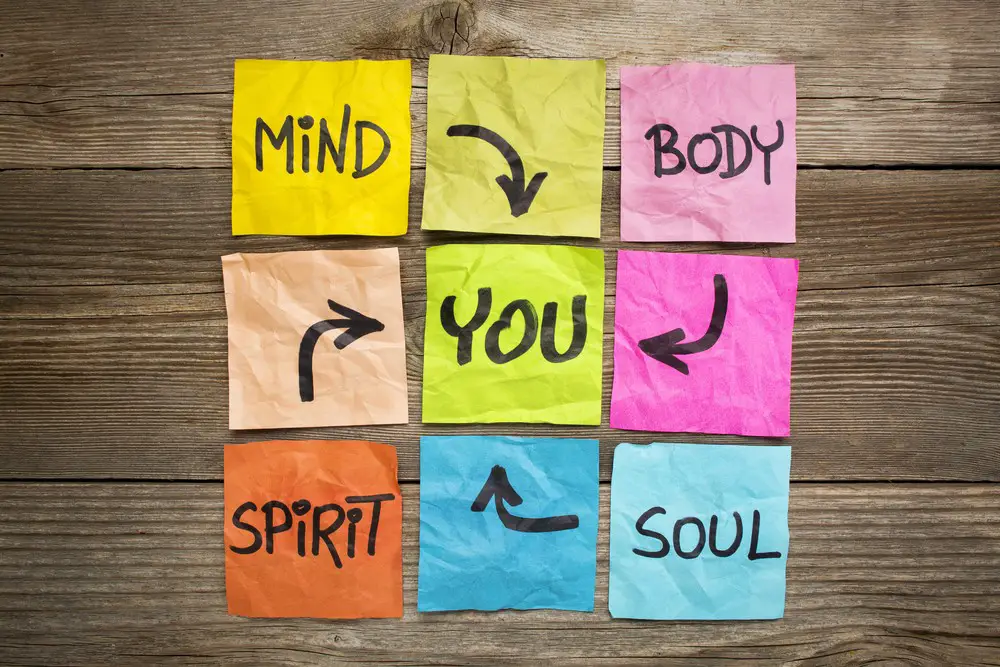As a BetterHelp affiliate, we receive compensation from BetterHelp if you purchase products or services through the links provided
Tantra meditation, originating from ancient Hindu and Buddhist traditions, is a powerful practice of altering states of consciousness and cultivating spiritual growth. Contrary to popular belief, it is not just about sexuality; it focuses on the union of polarities within oneself and the world. As you explore tantra meditation, you will dive deep into energy, sensation, and self-awareness.
In tantra meditation, you will discover techniques designed to awaken and channel your life force energy, known as “prana” or “kundalini.” Harnessing this energy elevates your spiritual journey and promotes physical vitality and emotional well-being. As you engage in this practice, you’ll find a greater sense of mindfulness and a more profound connection to your inner self and the world around you.
Sexuality does play a role in tantra meditation, but it is only one aspect among many. Through sensual experiences and the recognition of sexual energy, you can access deeper levels of consciousness and spiritual understanding. Tantra offers a unique approach to meditation, where significant symbols, elements, and rituals contribute to a transformative experience.
Key Takeaways
- Tantra meditation is a powerful practice from ancient Hindu and Buddhist traditions that helps you harness your energy and elevate your spiritual journey.
- Techniques used in tantra meditation awaken and channel your life force energy, promoting physical vitality and emotional well-being.
- While sexuality plays a role in tantra meditation, it is just one aspect that focuses on uniting polarities and increasing self-awareness.
 Understanding Tantra Meditation
Understanding Tantra Meditation
Origins and History
Tantra meditation has ancient roots, dating back thousands of years to Indian spiritual traditions. The word “tantra” comes from the Sanskrit term “tan,” which means “to weave” or “to expand.” As a spiritual practice, tantra meditation aims to awaken and expand awareness in various aspects of your life.
Historically, tantra was a meditation technique and a holistic system involving ritual, visualization, and sacred texts. Tantra’s teachings were often secretive and passed down through generations of devotees, gurus, and scholars. This ancient practice has evolved and adapted to modern times, focusing on your spiritual growth and integration of mind, body, and spirit while honoring its roots.
Principles and Philosophy
The underlying principles of tantra meditation revolve around becoming deeply connected with your inner self and the universe. This spiritual practice emphasizes the following:
- Unity: Tantra meditation teaches that everything in existence is interconnected, working harmoniously. You are encouraged to experience a sense of oneness with the universe and cultivate compassion and empathy for all beings.
- Energy: Central to tantra is the concept of life energy, known as “prana” in Sanskrit or “chi” in Chinese traditions. Tantra meditation helps you balance and harness this vital energy within yourself to enhance your overall well-being.
- Mindfulness: Tantra meditation invites you to be fully present in each moment, letting go of distractions and becoming more attuned to your thoughts and feelings. This heightened awareness can lead to greater self-discovery and personal growth.
Incorporating these principles into your daily life can transform your spiritual practice and deepen your connection with your true essence. Tantra meditation offers a unique path to self-actualization, revealing the profound interconnectedness of all life and empowering you to embrace the expansive energy within.
 Involved Techniques
Involved Techniques
Breathing Techniques
In tantra meditation, harnessing the power of your breath is crucial. Here are some techniques to enhance your practice:
- Deep, slow breathing: Inhale deeply through your nose, filling your lungs, and exhale slowly through your mouth. This helps to release tension and brings awareness to the present moment.
- Alternate nostril breathing: Close one nostril with a finger while inhaling through the other, then alternate sides. This balances the energy in your body and creates harmony between your brain’s left and right hemispheres.
Visualization
Visualization is an essential part of tantra meditation, enabling you to connect with your inner self:
- Inner light: Focus on visualizing a radiant light within your body that expands with each breath, filling your entire being with warmth and peace.
- Sacred geometry: Imagine intricate geometric patterns or symbols that resonate with you deeply. Contemplate their meaning and allow them to guide your meditation.
Mantras and Chanting
Mantras play a vital role in tantra, helping to focus the mind and cultivate specific energies:
- Seed syllable mantras: Chant a single syllable, such as “Om” or “Hum,” repeatedly with intention and devotion. This can help activate specific energy centers in your body.
- Longer mantras: Recite more extended phrases or stanzas that hold a particular meaning for you, such as “Om mani padme hum” or “Lokah samastah sukhino bhavantu.”
Mudras and Asanas
Mudras and asanas, or hand gestures and body postures, are an integral part of tantra meditation:
- Gyan mudra: Touch the tips of your thumb and index finger together, representing the union of individual and universal consciousness.
- Heart-centered asanas: Adopt yoga postures that promote heart-opening and vulnerability, such as the cobra or camel pose, to increase emotional connection with yourself and others.
Yantras and Mandalas
Incorporating visual aids can enhance your tantra meditation:
- Yantras: Focus on a geometric diagram that symbolizes cosmic energy, which can be used as a point of concentration to elevate consciousness.
- Mandalas: Meditate on intricate circular patterns, intending to reach a deeper understanding of the interconnected nature of all things.
The Role of Energy
Kundalini Energy
In Tantra meditation, understanding and working with energy is essential. One key aspect of energy is the Kundalini energy. This potent force lies dormant at the base of your spine, coiled like a serpent. During meditation, you can awaken this energy, which rises through the spinal column and stimulates your various energy centers or chakras. As you practice Tantra meditation, you’ll become more in tune with this energy, leading to profound spiritual growth and self-awareness.
Prana Shakti
Another vital type of energy in Tantra meditation is Prana Shakti. Prana refers to the life-giving force that permeates the entire universe. In your body, ‘Prana’ is present as your breath. Shakti is the feminine energy representing creation and manifestation. Hence, Prana Shakti is about harnessing your breath to channel the creative energy within you. By controlling and directing your breath, you can tap into this boundless energy to improve various aspects of your life, both in and out of the meditation practice.
Here are some ways to work with Prana Shakti during meditation:
- Focus on your inhalation and exhalation, sensing the energy flow with each breath.
- Visualize the breath as light enters your body, filling it with glowing energy.
- Practice specific breathing techniques, like alternate nostril breathing or Ujjayi breath to optimize energy flow.
 Chakras System
Chakras System
The Chakras System is a key component of Tantra meditation. Chakras are the energy centers in your body, aligned along your spine, from the base to the crown of your head. These spinning wheels of energy are responsible for the flow of Prana Shakti and Kundalini energy throughout your body. Each of the seven primary chakras corresponds to specific physical, emotional, and spiritual aspects of your life.
Some important chakras to focus on during Tantra meditation include:
- Muladhara (Root Chakra): Located at the base of your spine, it relates to your sense of security, stability, and grounding.
- Svadhisthana (Sacral Chakra): Located below your navel and above your hips, this chakra governs creativity, sexuality, and emotions.
- Ajna (Third Eye Chakra): Found on your forehead, slightly above the space between your eyebrows, it is associated with intuition, wisdom, and spiritual insight.
Opening and balancing these chakras during your Tantra meditation sessions will allow the free flow of energy throughout your body, leading to deep transformation and self-realization. Just remember to approach the practice with patience and an open heart; the energy will guide you on your path of spiritual growth.
 The Experience of Tantra Meditation
The Experience of Tantra Meditation
Physical Experience
Tantra meditation is a journey that engages your body, mind, and senses. You’ll become more in tune with your body’s sensations as you practice. You may notice your breathing patterns slowing down, your muscles relaxing, and your heart rate steadying. You might feel more connected to your physical self and be aware of bodily sensations.
Some practitioners experience physical pleasure during tantra meditation, ranging from subtle tingling to intense waves of bliss. This is a natural outcome of cultivating energy within the physical body and allowing it to flow freely.
Emotional Experience
Throughout your tantra meditation practice, you’ll gently and non-judgmentally explore your emotions. You may notice unresolved emotions or persistent patterns lurking beneath the surface. Tantra meditation helps you cultivate a safe space to acknowledge and process these emotions without becoming overwhelmed.
You’ll gain deeper self-awareness and understanding by paying attention to your emotions during meditation. This emotional exploration allows you to connect with yourself more profoundly and fosters inner peace and self-acceptance.
Spiritual Experience
At the core of tantra meditation lies the quest for spiritual growth and self-realization. Through this practice, you will gradually expand your consciousness and raise your awareness.
Many practitioners find that their meditation experiences lead to profound spiritual insights and heightened enlightenment. This growth may manifest as feelings of oneness with the universe, divine love, and compassion, or a deepened understanding of life’s purpose.
By consistently practicing tantra meditation, you are inviting spiritual liberation into your life. The journey may be gradual, but it will shift your perception of yourself and your place within the cosmos. Embrace this path and experience the tremendous benefits of spiritual growth. Remember that tantra meditation, like any spiritual practice, requires dedication, patience, and openness to change.
 Sexuality and Tantra Meditation
Sexuality and Tantra Meditation
Intimacy and Love
When practicing tantra meditation, you might find that your intimacy and love for your partner deepen. Tantra encourages you to explore your sensual side, creating a strong emotional bond through touch and eye contact. This form of meditation invites you to embrace vulnerability, honesty, and openness, ultimately leading to a more profound connection with your partner.
Sexual Practice
Sexual practice plays a significant role in tantra meditation. Integrating mindfulness and breathwork can heighten your sexual energy and enhance your sexual experiences. Here are a few tips:
- Breath awareness: Focus on your breath and synchronize it with your partner’s to create a harmonious union.
- Communication: Be open to sharing your desires and boundaries with your partner, and encourage them to do the same.
- Sensory exploration: Engage all your senses using scented candles, soft fabrics, and soothing music to create a comfortable and inviting atmosphere.
White Tantra and Red Tantra
Tantra meditation is often divided into two main categories:
- White Tantra: This form of tantra focuses on spiritual growth and emphasizes self-awareness, self-exploration, and self-transformation. You can practice it alone or with a partner, but it does not involve explicit sexual activities.
- Red Tantra: Also known as “sexual tantra,” this path emphasizes sexual practices, channeling sexual energy for self-improvement and deepening the bond with your partner. Red Tantra aims to use sexuality as a vehicle for spiritual growth.
Incorporating tantra meditation into your life can give you a fresh perspective on intimacy, love, and sexual practices. By engaging in White Tantra and Red Tantra, you can better understand yourself and your partner, leading to a more vibrant and fulfilling sexual relationship.
 Significant Symbols and Elements
Significant Symbols and Elements
Deities and Archetypes
In tantra meditation, you’ll encounter various deities and archetypes representing different aspects of the divine. These figures can help you to connect with profound concepts and energies, such as Shakti, the cosmic force of creation. In Buddhism, you’ll find female deities like Tara, embodying compassion and wisdom, and in Hinduism, you’ll see figures like Kali, representing transformation and protection.
By meditating on these deities, you can harness their strengths and qualities within yourself. Understanding each archetype’s different roles and attributes will enhance your practice and help you gain more profound insights.
Colors and Sounds
Colors and sounds play an essential role in tantra meditation, symbolizing various energies and states of consciousness. Vibrant hues like red and orange represent passion and vitality, while cool tones like blue and green symbolize calmness and healing. Each color, in turn, corresponds to a specific chakra or energy center within your body.
Similarly, sounds, particularly mantras, hold powerful vibrations that can affect your mental and emotional state. Chanting mantras allows you to tap into this energy and align your inner vibrations with the frequencies of the universe. Integrating these sounds and colors into your practice will support a transformative experience.
Texts and Languages
The foundation of tantra meditation lies in ancient texts, rich in wisdom and guidance. Written primarily in Sanskrit, these sacred scriptures reveal the secrets of rituals and techniques that help you navigate the subtle planes of existence. By delving into these texts, you’ll deepen your understanding of the practice and uncover how it intertwines with other spiritual traditions like Buddhism and Hinduism.
Learning and chanting mantras in their original language, such as Sanskrit, can enhance your experience and connection to their true essence. The vibrations of these languages resonate with the frequencies of the energies they represent, providing a gateway for further spiritual exploration.
Incorporating these significant symbols and elements into your tantra meditation practice will enrich your experience and foster a more profound connection to the divine. Embrace the deities, colors, sounds, and sacred texts as powerful tools on your journey, supporting you as you explore the mystery and magic of tantra.
Practical Guide to Tantra Meditation
Preparation
To begin your tantra meditation journey, prepare your space by ensuring it’s clean, quiet, and comfortable. Set the mood with dim lighting, candles, and soft music. Choose a comfortable sitting position, either cross-legged on the floor, on a cushion, or seated upright in a chair with your feet flat on the ground.
Solo Practice
For solo tantra meditation, you can focus on three main aspects:
- Breathwork: The first step is to become aware of your breathing. Take slow, deep breaths, inhaling deeply through your nose and exhaling slowly through your mouth. Pay attention to the sensations in your body as you breathe.
- Mindfulness: Practice mindfulness by staying present and observing your thoughts without judgment. Gently bring your attention back to your breath whenever your mind wanders.
- Energy Work: Visualize your energy rising from the base of your spine to your head as you inhale and descend back down as you exhale. Feel the energy moving through your body and connecting with your breath.
Partner Practice
You can explore deeper connections and shared experiences in tantra meditation with a partner. To practice partner tantra meditation:
- Seated Position: Sit facing your partner, cross-legged or on cushions, with your knees touching or almost touching.
- Eye Gazing: Maintain eye contact with your partner throughout the meditation. This can be challenging at first but is essential to building intimacy and trust.
- Synchronized Breathing: Match your breath to your partner’s, inhaling and exhaling together. Notice the connection between your breath and your partner’s breath.
- Energy Exchange: As you breathe together, visualize and feel the energy flowing between you and your partner, creating a strong bond.
Guided Meditation Steps
If you prefer a structured approach to tantra meditation, follow these guided meditation steps:
- Set Your Intention: Start by setting a clear intention or goal for your meditation, such as releasing negative emotions, connecting with your partner, or enhancing self-awareness.
- Relax Your Body: Take a few deep breaths and consciously release tension. Notice any areas of tightness or discomfort, and relax them as you exhale.
- Focus on Your Breath: Close your eyes and draw your attention to your breath. Inhale deeply through your nose, then exhale slowly through your mouth. Allow your breath to become slow, steady, and rhythmic.
- Connect with Your Heart: Bring awareness to your heart and feel it expand with each breath. Imagine your heart filling with love and radiating this loving energy throughout your body.
- Visualize Energy Flow: Focus on the energy rising and falling within your body as you breathe. Visualize your energy centers, or chakras, spinning and flowing in unison with your breath.
Consistent practice and openness to new experiences are the keys to successful tantra meditation. Enjoy your journey toward a deeper connection with yourself and others.
Who’s Invited to the Tantra Meditation Party…and Who Might Want to Sit This One Out
Tantra meditation can be a transformative experience but is not a one-size-fits-all solution.
Who It’s For:
- Spiritual Seekers: If you’re searching for deeper meaning and consciousness, Tantra is your playground.
- Emotionally Open: Those willing to dive into their emotional depths will find this form of meditation extremely rewarding.
- Energy-Curious: If the concept of “prana” or “kundalini” energy excites you, welcome aboard!
- Couples Seeking Connection: Tantra meditation can significantly deepen emotional and physical intimacy between partners.
Who It Might Not Be For:
- Skeptics: If you find it hard to open your mind to non-traditional forms of spirituality, this might not be your cup of tea.
- Quick-Fix Seekers: This isn’t a “solve-all-your-problems-in-a-day” kind of thing. It takes time, patience, and practice.
- Uncomfortable with Sensuality: Given that sexuality plays a role (though it’s not the sole focus), some might find this challenging.
Goals & Signs of Progress in Tantra Meditation
Goals:
- Mindfulness and Self-Awareness: Cultivating a heightened sense of your thoughts and feelings.
- Physical Vitality: Channeling life force energy for overall wellness and vitality.
- Emotional Well-being: Navigating emotional landscapes with grace and poise.
- Enhanced Intimacy: Whether with a partner or deepening the relationship with yourself, intimacy is a beautiful byproduct.
Signs of Progress:
- Increased Calm: Over time, you might notice you’re more tranquil and less perturbed by life’s ups and downs.
- Heightened Sensory Experience: Food tastes better; touch becomes more significant; colors seem more vibrant.
- Depth of Feeling: You’ll possibly be moved more deeply by emotions, whether joy, sorrow, or love.
- Better Physical Health: Many report improved sleep, energy, and sexual health.
So there you have it! Tantra meditation can be an enriching experience for those open to its multifaceted offerings. But remember, the journey is as important as the destination, so pay attention to the signs of progress along the way!
Frequently Asked Questions
How do I practice tantra meditation alone?
To practice tantra meditation alone, find a quiet space where you can sit or lie comfortably. Close your eyes and take a few deep breaths to relax your body and mind. Focus on your breath and set your intention for the meditation. Next, visualize your energy flowing through your body, starting at the base of your spine and moving up toward the crown of your head. As you do this, consciously awaken and expand your awareness of sensations throughout your body. Remember to be gentle with yourself and take breaks if needed.
What does a tantra meditation script entail?
A tantra meditation script typically includes:
- Setting your intention and aligning with your purpose
- Breathing exercises to help focus and relax the mind
- Visualization techniques that explore the flow of energy in your body
- Body scan and awareness practices for deepening your connection to yourself
- Mantras or affirmations to enhance your meditation experience
- Closure or grounding practices to end the meditation session
Where can I find guided tantric meditation?
You can find guided tantric meditation sessions online through YouTube, Spotify, or meditation apps like Insight Timer or Calm. Additionally, you can attend workshops or classes led by experienced practitioners or take courses offered by Tantra schools and online communities.
What are the benefits of tantric meditation?
Some benefits of tantric meditation include:
- Increased self-awareness and emotional intelligence
- Enhanced energy flow and vitality
- Improved focus, concentration, and mental clarity
- Heightened sensitivity to sensations and pleasure
- Better relationships and deeper connections with partners
- An overall sense of balance and well-being
How do tantric practices and yoga relate?
Both tantra and yoga are ancient practices rooted in Indian spiritual traditions that aim to assist individuals in their journey toward self-realization and enlightenment. While yoga primarily focuses on the physical body and its alignment through asanas (postures), tantric practices encompass a broader range of techniques involving energy, breath, and meditation. However, both systems aim to enhance the mind-body-spirit connection and expand personal consciousness.
What are some common tantric rituals?
Some common tantric rituals include:
- Puja or sacred ceremony: Honoring and connecting with divine energies through offerings, prayers, and chants.
- Meditation and visualization practices: Cultivating specific states of consciousness and inner exploration.
- Breathwork and energy exercises: Working with prana (life force) through techniques like pranayama and kundalini awakening.
- Yantras and mantras: Utilizing sacred geometrical diagrams and vocalizations to invoke and align with specific energies.
- Partner practices: Engaging in conscious, intimate exercises and rituals to deepen the connection, trust, and love between partners.
Remember that these practices should always be approached with reverence, openness, and a genuine intention for growth and transformation.
? A Little About Me: Jacob Maslow ?
Hey there, I’m Jacob Maslow, and I’ve been through quite a journey—physically, emotionally, and spiritually. I survived the 9-11 attacks, working on the 101st floor and losing over 1000 co-workers. That experience dramatically shaped my view of life and its fragility. For years, I transitioned into working from home, caring for our kids while my ex worked full-time and often nights. We managed to create a harmonious two-household system that enabled our kids to maintain a close relationship with both of us.
? The Storm That Hit My Family ?
However, over the past year, all that changed. My ex stopped cooperating with our reunification therapy, and I was entirely cut off from my kids, living alone in a three-bedroom apartment with two empty bedrooms that I stare at every day. It’s like a nightmare, but I’m trying to cope.
? My Journey with BetterHelp ?
One of the things that’s been a lifeline for me is BetterHelp. I recently joined their platform and can’t recommend them highly enough. The platform provides online counseling that helps me navigate the emotional minefield I’ve found myself in. And for those curious, yes, I am an affiliate, but I’m also using their services. They’re genuinely helping me stay afloat.
? My Bio ?
I take Lexapro to manage my mental health and have been a therapy veteran. My ex, unfortunately, suffers from severe narcissism, which has intensified over time. Her actions have led to a complex and ongoing court battle regarding the shared custody of our kids, something she consistently refuses to cooperate with. I take long walks daily to clear my mind and write extensively about mental health and narcissism.

? The Eight Pillars of Resilience ?
Over the years, I’ve expanded my framework to encompass The Eight Pillars of Resilience. These guiding lights have been indispensable during life’s challenging twists and turns. The beauty of these pillars is that they’re not just my secret recipe for resilience; I’ve discovered that many folks are on parallel journeys, leaning on these pillars to navigate their complexities.
? My Mission ?
I also run a legal site aimed at helping people dealing with non-cooperative spouses and navigating the complexities of court orders. My mission through my writings and websites is simple: I want to help you beat your mental health issues and navigate the treacherous waters of a complicated family dynamic.
I’m passionate about sharing my experiences, and I hope they can help you on your journey, too. Because remember, whatever you’re going through, you’re never alone.

- 3 Ways Wearing a Hat Can Help Lower Your Stress Levels - April 19, 2025
- Breaking the Silence: Why Men’s Mental Health Matters More Than Ever - April 15, 2025
- How to Transform a Home’s Patio Space into a Relaxing Space - March 23, 2025
This site contains affiliate links to products. We will receive a commission for purchases made through these links.


 Understanding Tantra Meditation
Understanding Tantra Meditation Involved Techniques
Involved Techniques Chakras System
Chakras System The Experience of Tantra Meditation
The Experience of Tantra Meditation Sexuality and Tantra Meditation
Sexuality and Tantra Meditation Significant Symbols and Elements
Significant Symbols and Elements
